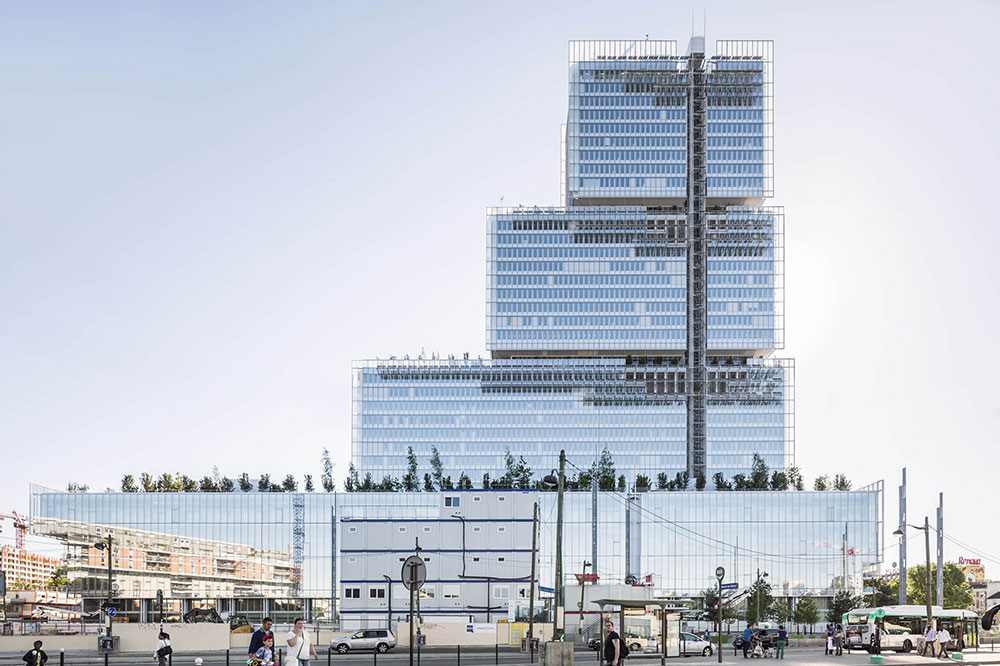As cities evolve, the CSTB gives guidance for improved user comfort
Half of the world's population now lives in cities, and numbers are growing. With the emergence of an increasingly dense urban model, expectations for living well in urban environments are high.
“Activities tend to concentrate around urban centers,” explains Séverine Kirchner, director of Health & Comfort at the CSTB, “with buildings close together and more transport options. High-rise buildings are increasingly common, and their envelopes now have plant cover. These trends, among others, influence our approach to the quality of ambient conditions. We must consider a variety of environmental parameters to improve the health and well-being of users.” In connection with evolving urban landscapes and lifestyles, the CSTB's expertise in Comfort is helping the development of living spaces. Here is a focus on advances in 2017 in sound, visual and climate quality under ambient conditions.
Sound comfort
Improving the quality of urban life by anticipating and reducing noise pollution related, in part, to traffic. The CSTB is participating in development projects by creating soundscapes for the future. Stakeholders can assess the quality of proposals by listening. The CSTB also makes it possible to compare scenarios and test acoustic improvement solutions. In 2017, at the request of the City of Paris, the CSTB conducted an assessment of sound comfort at place de la Nation, as part of its renovation.
Another urban issue whose importance is increasing with the densification of cities: controlling the vibration impact of transport infrastructure. The CSTB offers engineering firms and project owners software (MEFISSTO) that calculates the vibrations that propagate in the ground and structures. This tool is now used by the firms working on the Grand Paris Express. For very complex projects, the CSTB assists stakeholders as an expert in combining metrology and simulation.
Acoustic performance is also essential to consider in buildings. This involves assisting in the selection of appropriate construction solutions starting in the design phase. In this sense, the CSTB’s research in 2017, concerned noise prevention related to waste water drainage in piping systems and the impact of footsteps on floors in particular. The CSTB is collaborating with the Laboratory for Testing and Assessment (LPEE) in Morocco, the Land and Housing Institute (LHI) in Korea and Lund University in Sweden. It also participated in the European project Silent Timber Build whose results on the acoustic performance of floors supported by wood joists were presented at the WoodRise Congress in September 2017.
Lighting quality
As urban architecture evolves, the quality of natural sunlight levels in cities is a concern. The CSTB guides projects by analyzing the levels of people's exposure to natural and artificial light in and around buildings. It considers the risk of glare or reflections on glass facades. Using advanced photosimulation, the CSTB can create lighting scenarios starting in the design phase and guide stakeholders in improving projects. In 2017, it used its lighting expertise in the Paris-La Défense district and an ecodistrict in Issy-les-Moulineaux. For buildings, it also contributed to the design of the new district courthouse that opened its doors in Paris in 2017. The CSTB helped optimize the lighting quality of the huge entrance atrium, a very complex volume that is difficult to model with the lighting tools on the market.
Climatic comfort
Another growing concern of users is climatic comfort. To address this issue, the CSTB combines ventilation analysis (natural and mechanical) with heat exchange in buildings. This helps to improve summer comfort and meet specific needs, such as those of the Beauval ZooParc. In 2017, the CSTB assisted in defining the indoor climate of a bioclimatic greenhouse, home to plant and animal species and open to the public.
Climatic comfort also concerns outdoor spaces. It is important to control the effects of wind, solar gain, humidity and other factors. The CSTB has advanced expertise in the management of microclimates around structures. Air current at the foot of a single tower, air pollution between buildings of the same height, exposure of buildings to moisture coming from the sea: these are examples of the situations for which the CSTB provides multidisciplinary expertise to ensure occupant comfort. Its recommendations can cover the alignment and geometry of the frame, the installation of plantings and street furniture. This was the case in 2017 for the analysis of wind resistance and comfort for the towers in the Paris-La Défense district.
The CSTB also works on the greening of building envelopes. As part of the European GROOF R&D project, for example, launched in 2017, it is studying the use of green roofs to reduce CO2 emissions in outside air, while recycling building heat to grow produce in rooftop greenhouses.
